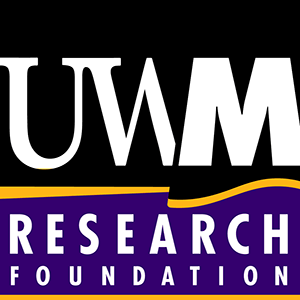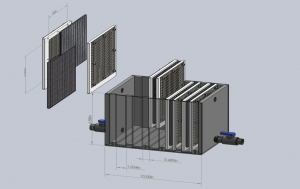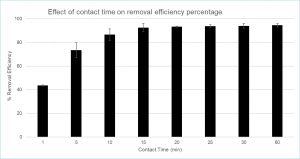
OTT1467
Technology
An effective zeolite based composite material has been developed for the removal of contaminants in water. Our inventors have discovered a method of functionalizing zeolite with metal oxides such as lanthanum and magnesium in order to adsorb and remove phosphorus contaminants. This material shows a 10-fold greater capacity than untreated zeolite, removing up to 98% of phosphorus. Our modified zeolite can also be recycled and reused at least 10 times and the phosphorus can be recovered for re-use.
Phosphate is a common water contaminant, especially in farm run-off, storm water drains, and from use of commercial cleaning products. Excess nutrients in the water negatively effects the environment, the economy, and even recreational use of beaches. On the other hand, phosphate is crucial in the production of food. The exact size of the world’s phosphorus resources is unclear. The subject has been hotly debated by experts in recent years. Some argue that global supply will be depleted in 50 to 100 years and that production will peak in 2030. Others argue that the reserves will last for several hundred years. Current materials used for phosphate removal and recovery are chemical treatments, biological treatments, or other zeolite materials, that are not stable at a variety of pH and temperatures, are not recyclable, and can be less stable. Our flexible and easy to deploy technology provides a solution for the observed issues and can remove 40% of phosphorus in only 1 minute and 90% in 10 minutes.
Features/Benefits
- Faster – Can remove 40% of P (industry standards) in 1 minute and 90% in 10-15 minutes
- Stable – Works at pH levels of 2 to 9 and up to 450ºC
- Recyclable – The material can be separated from P and the zeolite reused
- Profitable – The collected P can be removed from the modified zeolite and reused
- Easy – The modified zeolite can be deployed in a number of ways to filter water
Intellectual Property
Pending International Application: WO2017214530A1
This technology is part of an active and ongoing research program and is seeking partners for development of the final product. It is available for developmental research support/licensing under either exclusive or non-exclusive terms.
Markets
This technology has the potential for several markets including phosphorus removal from waterways and wastewater as well as for the reuse and sale of the recovered phosphorus for other industries. Reclaimed phosphorus pays off for the environment with less mining for phosphorus and improved surface water health. About 90% of the world’s mined phosphorus ends as the crucial ingredient in fertilizers.
The global phosphate market was valued at $67.3 Billion in 2015 and is projected to reach $75.2 Billion by 2021.The global phosphate fertilizer market size was estimated at $51.6 billion in 2016. Increasing global population, meat consumption, and diversified food demand is anticipated to drive this market. The food phosphate Market size is slated to cross $2.4 billion by 2024.
Inventor (s)
Dr. Marcia Silva is an Assistant Scientist/Facility Manager at the University of Wisconsin-Milwaukee Water Technology Accelerator and Adjunct Assistant Professor for the School of Freshwater Sciences. She earned both her M.S. and Ph.D. degrees in Engineering from the University of Wisconsin-Milwaukee and has more than 20 years of industrial and academic experience. Her laboratory has been working collaboratively with industry, startups, Water Council and government organizations in the freshwater space, focusing mainly on development of novel water sensors and novel filtration media for water purification.
Dr. David Garman leads The Water Council’s research and commercialization initiatives, as the Chief Technology Officer. Previously serving as president and chairman of the International Water Association, David now serves as a director for them. He was also founding dean of UWM’s School of Freshwater Sciences. Dr. Garman’s career has covered the full range of environmental management—from water resources and pollution control, to commercialization of new environmental technologies.


